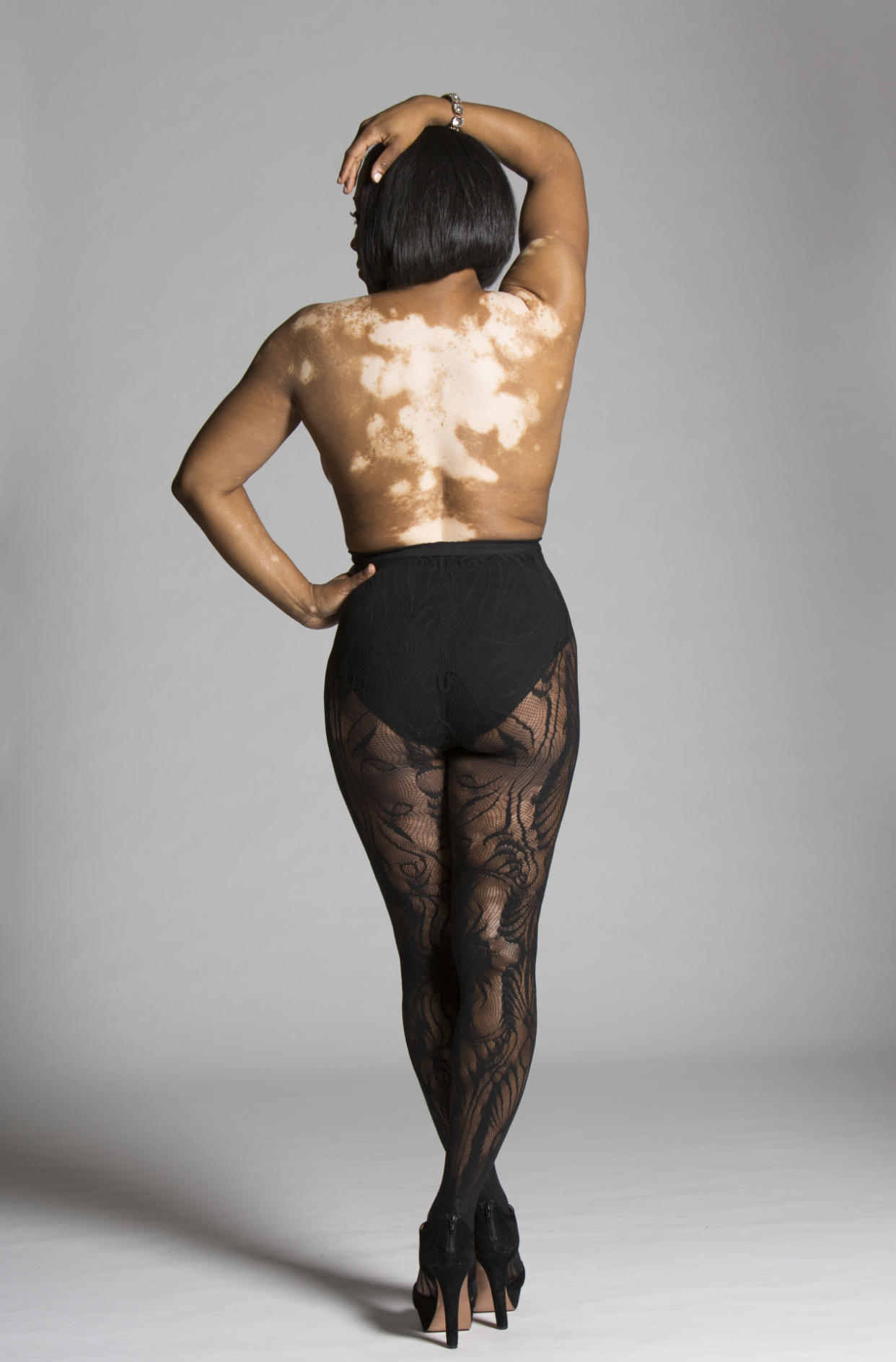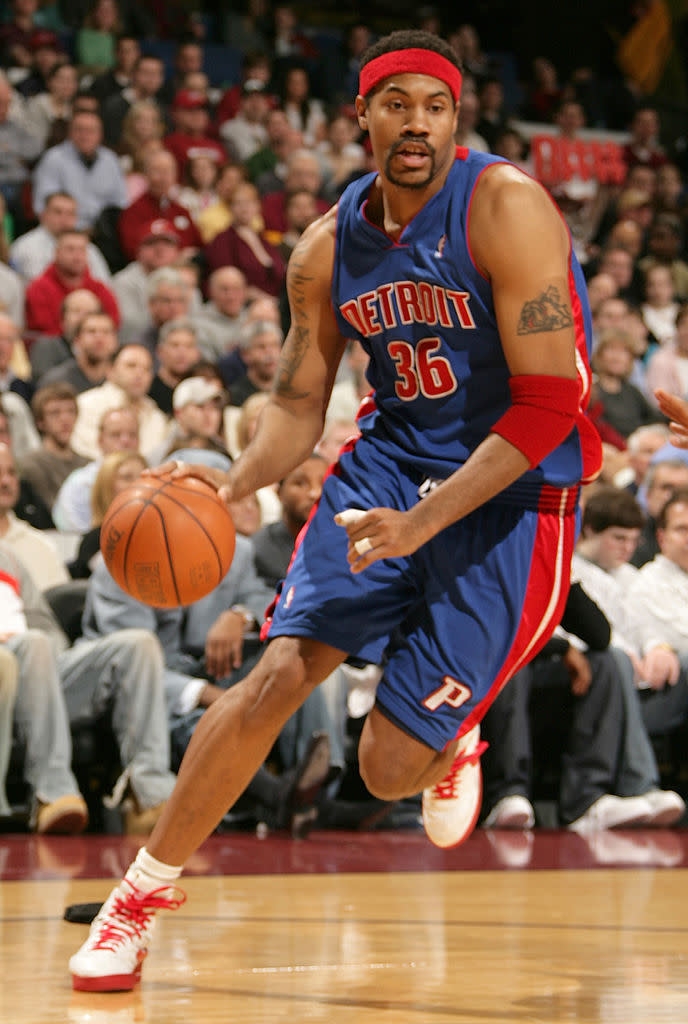What It Is Really Like Living With Vitiligo

Interior designer Dayka Robinson proudly embraces living with vitiligo. (Photo: Courtesy of Dayka Robinson)
Imagine walking down the street, knowing that everyone you pass is staring at you, wondering what happened to you and why you look the way you look.
That’s what it’s like for Atlanta-based interior designer Dayka Robinson, one of the nearly 100 million people around the world affected by vitiligo, a condition that results in loss of pigment in patches of skin, sometimes to such an extent that the entire body loses its pigment.
What’s worse than being constantly stared at, says Robinson — who saw the first signs of vitiligo on her body nine years ago — is knowing that there is nothing that can be done. While vitiligo is neither life-threatening nor contagious, and though it can be treated, it is incurable. And the weight of that reality is often extremely painful to bear.
“As [the vitiligo] started to spread, there was a lot of sadness and grieving for the body I was losing, and I fell into that pit of wondering ‘Why is this happening to me now? What did I do to deserve this?’” Robinson says. “It may not have any effect on the functioning of my body, but the psychological effects of vitiligo are real. I started questioning whether I was beautiful. Whether or not anyone would ever find me attractive again. If people would always be looking at me, wondering, ‘Why does she look like that?’”
That’s exactly how Cece Jones-Davis, a minister in Halifax, Va., felt for the first five years after vitiligo manifested itself as a small, white patch on her elbow in 2009.
“My biggest issue was being in some way disfigured and losing my pretty girl title,” she says, “and there was a long season that I just gave up. I didn’t do special things to my hair or worry about my weight because I figured ‘What’s the use?’”

Sisters Cece Jones-Davis and LeLe Jones lean on each other to live a beautiful life with vitiligo. (Photo: Courtesy of R. Dione Foto)
The prospect of her skin turning completely white and robbing her identity was also a major concern for Jones-Davis. Nevertheless, she and her identical twin, LeLe Jones, who was diagnosed with vitiligo in 2009, have managed to come to terms with their condition and with themselves — finding both confidence and strength to move on in a positive direction.
Today, the conversation surrounding vitiligo is much more vibrant than it was a decade ago, says Jones, who with Cece is an advocate for vitiligo awareness. Important events like World Vitiligo Day are helping to educate and inform the public about the condition. And Jones believes that increased knowledge will not only help people better understand what those with vitiligo go through, but will also lead to increased research for a cure.
On a broader level, leaders of the Vitiligo Working Group (VWG), a physician-led organization at the forefront of efforts to improve the lives of people with vitiligo, have launched a global Step Up for Vitiligo awareness campaign. The campaign features an award-winning video, Vitiligo: Truth, Hope and Change, which includes several globally recognized vitiligo experts and a racially diverse group of patients with compelling personal stories.

Michael Jackson was one of the most famous celebrities with vitiligo. (Photo: Getty Images)
And, of course, high-profile celebrities with vitiligo — Michael Jackson, Emmy-winning broadcaster Lee Thomas, professional basketball player Rasheed Wallace, and Canadian model Winnie Harlow, to name a few — have certainly helped in shaping the public’s perception of those who live with the condition.

Retired NBA player Rasheed Wallace lives with vitiligo. (Photo: Getty Images)
“To know that Michael Jackson is considered the greatest entertainer of all time, to see Winnie [Harlow] strutting her stuff on the runway, gives us all a surge of inspiration to get out there and make our lives happen,” says Jones-Davis. “It is the potential idea that maybe we aren’t strange, maybe we’re ‘exotic’ or special or unique, maybe we are still incredibly talented and have great things to offer the world. People like Michael Jackson and Winnie Harlow give us that hope.”
To the extent that celebrities are willing to move past just explaining what’s going on with their own appearance, the effect can be powerful, says Jones.
“Winnie Harlow has certainly done an amazing job showing the world that spots are beautiful, and I so appreciate the confidence she encourages us to walk in,” Jones says. “I’d like to see more popular people engage in the fight for adequate treatment, insurance coverage, and research for a cure. Then their celebrity status will matter.”

Model Winnie Harlow has fully embraced living with vitiligo. (Photo: REX)
The fact that Winnie Harlow walks on runways around the globe and appears on magazine covers is huge for Robinson, whose vitiligo has now spread to every part of her body, such that “I look drastically different than I did nine years ago.”
Harlow, who was diagnosed with vitiligo when she was 4, has spoken many times about being bullied about her appearance — to such an extent that she dropped out of high school. But “because she had the confidence to reach for her dreams, she’s not only made society aware of vitiligo as an autoimmune disease, she’s also played a huge role in helping to shift the national conversations about beauty,” says Robinson, who despite the challenges vitiligo poses, continues to follow her own dreams with strength, a sense of humor, and the kind of energy that says, “I belong here too.”
Let’s keep in touch! Follow Yahoo Beauty on Facebook, Twitter, Instagram, and Pinterest.


